Nautical Miles vs Miles
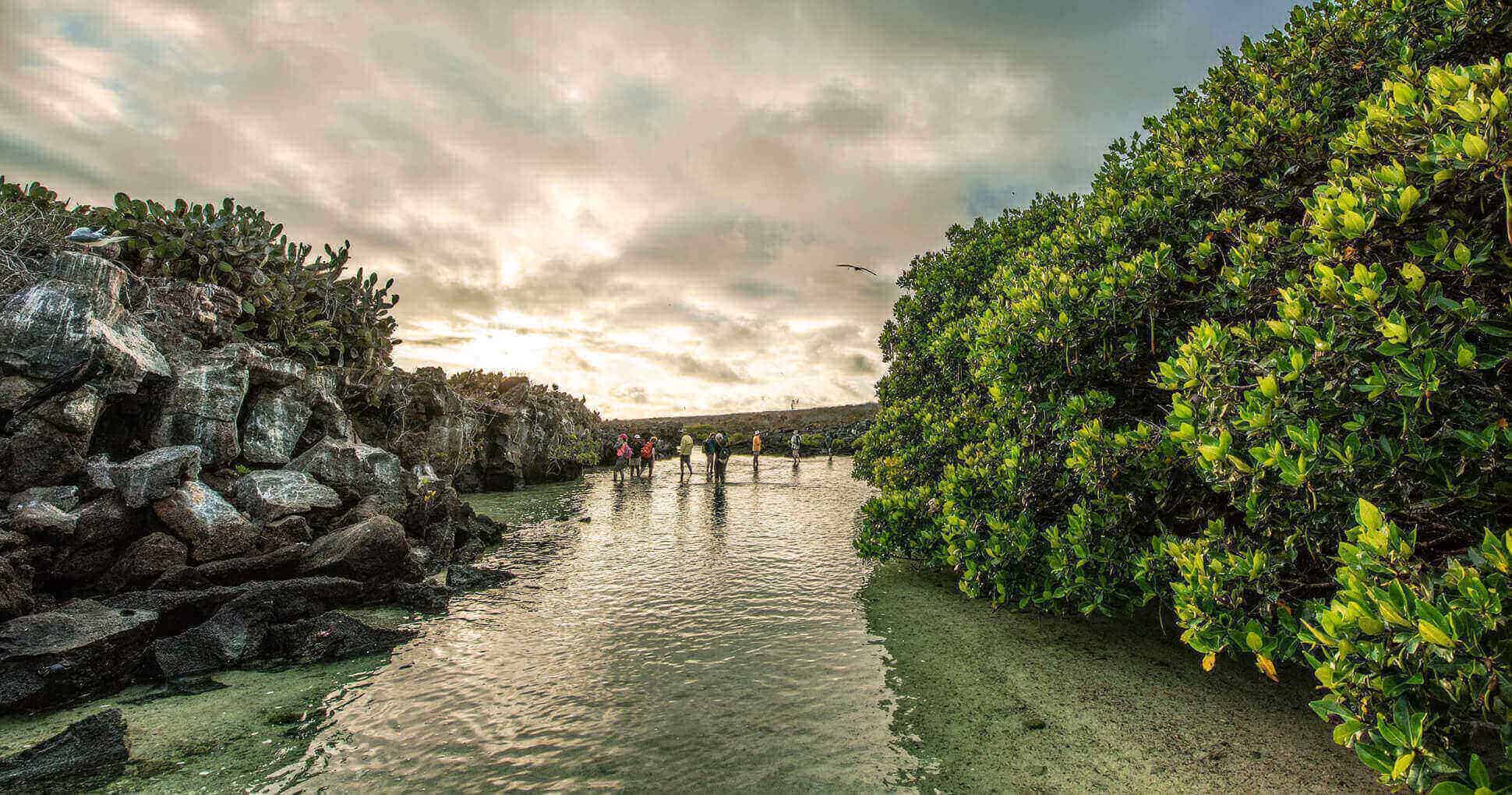
Measure, Measure, Measure…
One of the greatest things about travel is that it requires planning, especially if you’re looking to travel to the Galapagos. Sometimes, this planning involves packing, logistics, flights, decisions, and much more; in fact, that is the beauty of travel. A dose of the unknown is also welcome when traveling, as it brings a feeling of exploration and adventure. However, nothing beats the importance of planning a trip when it comes to calculating distances. Some will measure this in kilometers, others in miles, and others will measure travel in terms of weeks. No matter how you measure a trip, one thing is for sure: calculating the distance between point A and point B, and anything in between, is where the essence of travel lies. But, here comes the best part. What if I travel on water and land? Will it make any difference? Explorers back in the day figured this out and designed a system to measure distance in the open ocean, and a different one to measure distance on land. But, why two measuring units? There’s a very interesting science behind this, and you’ll love it!
Ocean versus Land – where curves make a difference!
Realistically, although we seem not to notice it, there is a tremendous difference between measuring distances on the ocean versus on land. At the open ocean, the curvature of the Earth needs to be added as a measuring variable because there are no obstacles along the way. On land, there are plenty of physical obstacles; mountains, valleys, hills, dips, crevices, and more. Therefore, a different measuring unit is needed for each. This is why we read terms like “nautical miles” and “terrestrial miles” (also just known as miles). These give you different results in order to compensate for the curvature of our planet, which is readily experienced on the open ocean, and of course, open-air as well.
Safety In Numbers…learn your miles
A nautical mile is based on the circumference of planet Earth. If you were to cut the Earth in half at the equator, you could pick up one of the halves and look at the equator as a circle. You then divide that circle into 360 degrees, and a degree into 60 minutes. A minute of arc on planet Earth is 1 nautical mile. This unit of measurement is used by all countries, for both air and sea travel.
A knot is a unit of measurement for speed. If you are traveling at a speed of 1 nautical mile per hour, you would be traveling at a speed of 1 knot.
A kilometer is also defined using planet Earth as a standard of distance. If you were to take the Earth and cut it in half along a line passing from the North Pole through Paris, and then measure the distance of the curve running from the North Pole to the equator on that circle, and then divide that distance by 10,000, you would have the traditional unit for the kilometer as defined in 1791 by the French Academy of Sciences. These technical measurements were made right in Ecuadorian lands, and they are also very important in world history because it was the first time a non-Spanish scientific mission was allowed to enter South American lands.
A nautical mile is 1,852 meters or 1.852 kilometers. In the English measurement system, a nautical mile is 1.1508 miles or 6,076 feet.
To travel around the Earth at the equator, you would have to travel (360 * 60) 21,600 nautical miles, 24,857 miles or 40,003 kilometers.
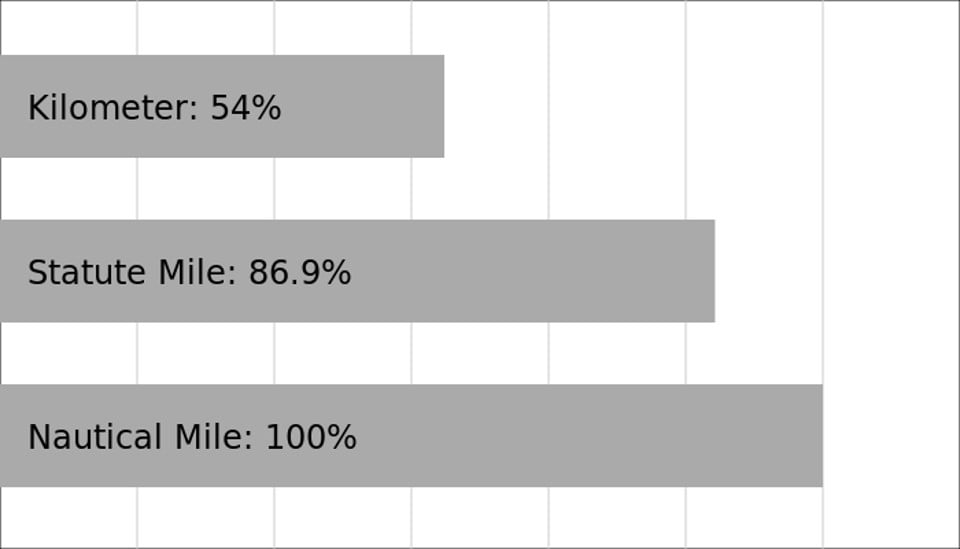
Notice the difference between miles and nautical miles
Travel using nautical miles aboard our luxury vessel Yacht La Pinta!
Get ready for your Galapagos tour!
Let’s Go Back in Time
The word mile comes from the Latin mille passus, a thousand paces. Navigation at sea was done by eye until around 1500 when navigational instruments were developed and cartographers began using a coordinate system with parallels of latitude and meridians of longitude. In 1617, the Dutch scientist Snell assessed the circumference of the Earth at 24,630 Roman miles (24,024 statute miles). Around that time British mathematician Edmund Gunter improved navigational tools including a new quadrant to determine latitude at sea. He reasoned that the lines of latitude could be used as the basis for a unit of measurement for distance, and proposed the nautical mile to measure one minute or one-sixtieth (1/60) of a degree of latitude. As one degree is 1/360 of a circle, one minute of arc is 1/21600 of a circle (or, in radians, π/10800). These sixtieth (base 60) units originated in Babylonian astronomy. Gunter used Snell’s circumference to define a nautical mile as 6,080 feet, the length of one minute of arc at 48 degrees latitude. Since the earth is not a perfect sphere but is an oblate spheroid with slightly flattened poles, a minute of latitude is not constant, but about 1,861 meters at the poles and 1,843 meters at the Equator, with a mean value of 1,852.3 meters (6,077 ft.). Other countries measure the minute of arc at 45 degrees latitude, giving the nautical mile a length of 6076 ft. (approximately 1,852 m).
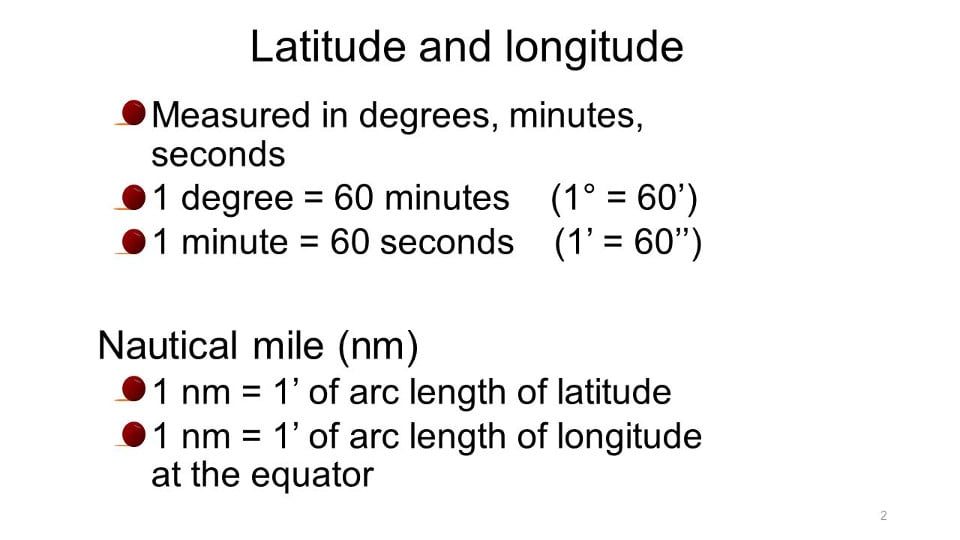
These measurements are helpful for those who navigate the sea!
Nautical Miles vs Miles
In 1929, the international nautical mile was defined by the First International Extraordinary Hydrographic Conference in Monaco as 1,852 meters.
Imperial units and United States customary units used a definition of the nautical mile based on the Clarke (1866) Spheroid. The United States nautical mile was defined as 6,080.20 feet (1,853.24 m) based in the Mendenhall Order foot of 1893. It was abandoned in favor of the international nautical mile in 1954.
The Imperial nautical mile, often called an Admiralty mile, or more correctly, an Admiralty measured mile, as defined by its relation to the Admiralty knot – 6,080 imperial feet per hour – so 1 imperial nautical mile is about 1,853.181 meters. It was abandoned in 1970 and, legally, references to the obsolete unit are now converted to 1,853 meters.
If you are still uncertain about the difference between nautical miles vs miles, come aboard Yacht La Pinta, and it will all be clear right away. Picture the open ocean before you, amazing wildlife roaming freely around you, and your worries far behind. Every concept, simple or complex, will suddenly have a new meaning and the nautical miles you will be traveling around the Galapagos Islands, will be filled with the most amazing memories.
RELATED STORIES

What are the best birds to see in the Galapagos?
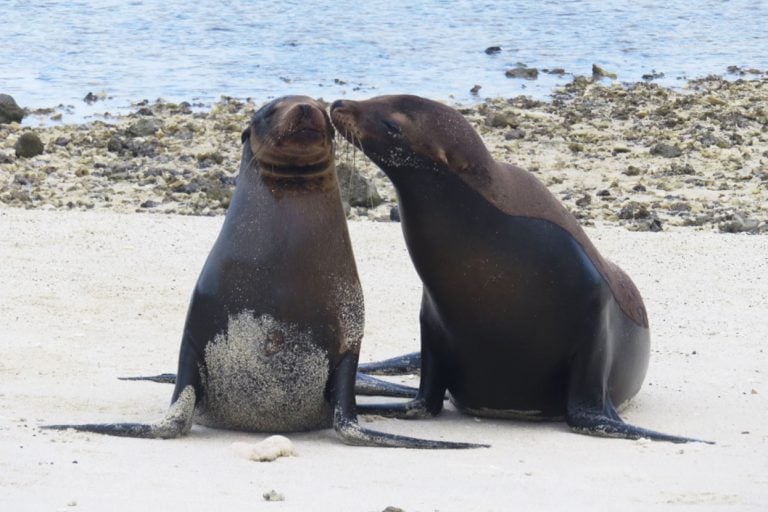
Six Stunning Ways Galapagos Island Animal Mothers Nurture Their Young

Guy Fawkes on the Galapagos Islands: Never forget the November “Finch”…
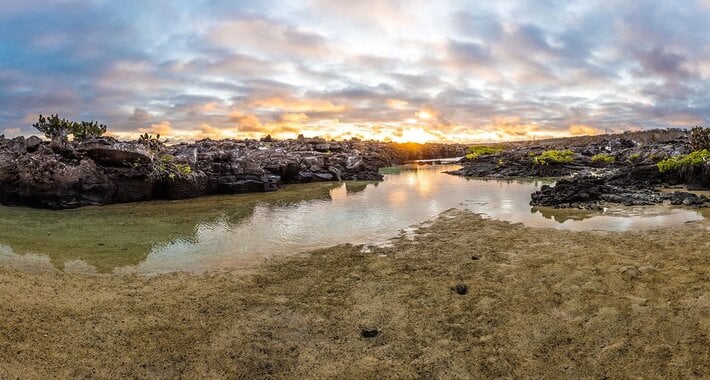
A Unique 6-Day Insular Inspiration Session with Charles Darwin on Santiago Island!
